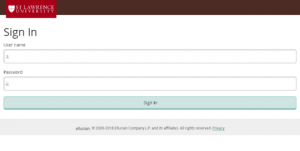The class registration system used at SLU is APR 2.0, which first came to

campus in 2014. Kirk Fuoss, a PCA professor, believes the new system is an improvement. “I think it makes it much clearer for students to see their progress towards graduation,” said Fuoss. However, he also thinks certain aspects of the previous system was better because it required students to meet with their advisors.
Even when APR 2.0 was first implemented, the system had some issues. Gordon White, a fifth-year student, was a freshman during the debut of the current system. “It kept crashing and it was super slow, very similar to how it was last year,” said White. Since then, it seems as though the system has been working smoothly, with the exception of last fall. “I couldn’t register for two whole days last year. So, I just wasn’t in an FYS until 43 minutes before registration closed,” said Anna Foster ’21.
The previous registration system used at SLU was seniority based. Seniors were allowed to register for classes first, followed by juniors and so on. Jess Young, ’19, believes that there should still be a seniority based system in use. “I needed one course to finish my major, so I registered for that one first, but then all the other classes I needed filled up the first day and I was searching for hours for other classes that I could register for,” said Young. However, there are people who believe otherwise. “I think it’s fairest if everyone is registering at the same time,” said Fuoss.
seems like a good idea,” said FYP professor Josh Exoo. When first-year students register for the spring semester, they register for FYS on the first day. On the second day, a lot of the classes they originally wanted are full.
The biggest problem with the class registration system at SLU seems to be how students register. APR 2.0 is actually a great website for students to use to view and select classes. “The user interface is pretty good compared to some websites,” said White. APR as a website works well for students as well as professors. “As far as advising goes, I find it pretty easy. The website is very user friendly,” said FYP professor Rebecca Jewell.
Students are not struggling to use APR. They are struggling with having to wake up at 7 a.m. to register for classes they may or may not click fast enough to register for. “It sounds like APR, the website itself, is fine. It’s just the way that we actually register for classes is ridiculous and unnecessarily stressful,” said Foster. If change is needed, it is within the actual registration process, not within APR.



